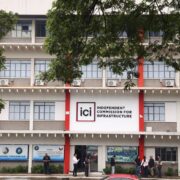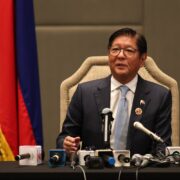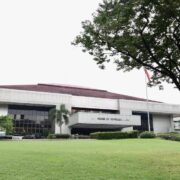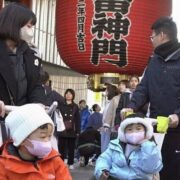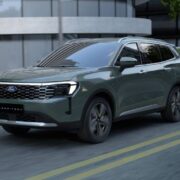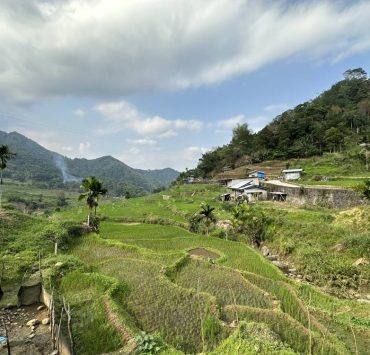36 + 2 years on the motoring beat
Thirty-six plus two is thirty-eight, and that’s the number of years I’ve been covering the motoring beat. So this story is timely, since the Inquirer is celebrating its 38th anniversary today.
Before the COVID-19 lockdowns began in March 2020, motoring was a highly coveted beat because of all the perks it gave. As I wrote in my farewell column “Time to Change Gears” in May 2015, it involved attending press conferences where new car models are launched, test-driving new cars individually, joining trips out of town or abroad to test new cars with other motoring media, attending the anniversary dinners, celebrations or “meet and greet” socials for new top executives of the automotive industry, going to auto shows here and abroad, and writing about them.
PERKS. Plus getting invited to watch Formula One races abroad and to events in Italy, Germany, France, the United Kingdom, the United States, Japan, China, Thailand, Malaysia, Indonesia, Singapore and closer to home: Palawan, Ilocos Norte, Oriental Mindoro, Banaue-Ifugao, Batanes, Baguio, Bacolod, Boracay, Iloilo, Cebu, Davao, Zamboanga, and of course, Subic and the Clark International Speedway.
Motoring journalists are a spoiled bunch, and that included me as one of the first (in 1987) to write a weekly motoring column, “On the Road,” in a newspaper, the Philippine Daily Inquirer. I did not have to go to a car dealership to pick up a test unit, it was delivered to me – premium brands like BMW, Mercedes-Benz and Volvo included.
There was a time when I begged off a Mercedes-Benz new car launch in Makati because of a strong typhoon. No problem: the PR sent a Mercedes E-Class driven by a uniformed chauffeur to pick me up and bring me there.
Despite enjoying these perks over a period of 28 years, I quit my motoring column to focus on writing a book, which came out in February 2016, published by Anvil. “The Best of the Unforgettable Legal Stories” is the fourth compilation of over 100 stories I have written based on actual cases.
Still, I continued to contribute articles to the Motoring section, not only test drive reports, the Tokyo Motor Show (now the Japan Mobility Show) every two years, and developments in the automotive industry. I missed the friends I had made in the motoring media and the auto industry.
GOING DIGITAL. The fun times ended abruptly when the COVID-19 pandemic struck and caused the government to impose a series of lockdowns starting in March 2020. No more test drives, lavish dinners hosted by car manufacturers, annual auto shows, press junkets abroad.
For the industry, factory shutdowns, shorter operating hours, and global supply chain disruptions especially concerning semiconductors became the “new normal.”
Industry players adjusted to the “new normal” by pivoting to digital marketing and online sales with the creation of digital showrooms and the organization of virtual launches and activities. They also facilitated online bank loan applications to make it easier for customers, and gave top priority to enhanced customer and ownership experience.
And so the auto industry faced the challenges of the COVID-19 pandemic, and endured. Toyota Motor PH, for example, returned to two-shift assembly plant operations as early as September 2020. After all, mobility is an essential part of the economy and motorization will continue in a country where the grossly inadequate public transportation system is forcing more people to buy cars. This was the opening for the surge in sales of small, entry-level, affordable cars made in China and India.
2021 COVID YEAR. The year 2021 began spectacularly as the Top 10 rankings were suddenly scrambled. January 2021 accelerated the decline of Hyundai Asia Resources, Inc. (HARI) as it dropped out of the Top 5 while 6th placer Ford leapfrogged over No.5 Suzuki and No. 4 HARI, to grab 4th place. HARI, thus, sunk to No. 6 with 7th placer Honda Cars PH, Inc., only 24 units behind.
In March 2021, the combined imposition of safeguard duties and a new Enhanced Community Quarantine (ECQ) in the National Capital Region slowed down sales month-on-month, but the industry still managed to post an 8.9% year-on-year increase in Q1 sales. Ford’s sales were enough to put it only four units behind No. 3 Nissan, while Honda overtook Hyundai to take No. 6 place.
The big news in June 2021 was that Suzuki toppled Ford from the No. 3 perch by selling 132 units more than the American brand. The other big news in June was Honda grabbing the No. 7 slot from Hyundai, which pushed the Korean brand down to No. 8.
In July 2021, regarding the 56.1% growth in first semester sales versus the same period in 2020, and the paltry 2.2% growth in June versus the previous month, Chamber of Car Manufacturers of the Philippines, Inc. (CAMPI) president Rommel Gutierrez, concurrently 1st vice president of Toyota Motor PH, said: “The auto industry continues to adjust to the effects of the pandemic, at the same time trying to strike a balance between its contribution to the economy and keeping its stakeholders safe and healthy during these unprecedented times.”
The Association of Vehicle Importers and Distributors, Inc. (AVID) headed by Ma. Fe Perez-Agudo, concurrently president of Hyundai Asia Resources, Inc. (HARI) and Changan Motor PH, reported a 55% increase in total vehicle sales for the first semester of 2021, but a hairline improvement in June sales versus May.
In September 2021, despite a 12.4% decline in total vehicle sales reported by CAMPI compared to the same month in 2020, the industry was still hoping to reach its target of selling 295,000 units by year-end. The fact that the lingering pandemic was still affecting business strategies was underscored by MG (Morris Garages) PH conducting a media launch virtually for the new turbocharged MG ZST crossover.
ENTER 2022. The year 2022 started roughly for the auto industry because of a record-breaking surge in coronavirus infections. Moreover, CAMPI and the Truck Manufacturers Association reported that in 2021, total vehicle sales reached 268,488 units, a 20% growth compared to 2020, but short of the target 295,000 units for 2021.
The COVID-19 surge prompted car manufacturers to continue marketing on various digital platforms to ensure the safety of customers, employees, and dealer partners. Industry players saw how consumers turned to digital and social media during the pandemic’s first two years to get information about products and services they wanted to purchase.
The combined first semester 2022 sales report of CAMPI and TMA indicated a 16.7% growth, versus the same period in 2021 with YTD sales of 154,874 units despite the annual inflation rate rising to 6.1% in June from 5.4% in May, supply chain disruptions caused by the lingering pandemic, and the continued rise of fuel prices. All these caused delays in the delivery of vehicles to customers, but that did not seem to dampen consumer demand for new cars.
Meanwhile, at the end of the first semester the Top 10 Sales Performers were Toyota, Mitsubishi, Nissan, Suzuki, and Ford comprising the Top 5, and Isuzu, Honda, Geely, Kia, and Foton ranking Nos. 6 to No. 10. At this time, Geely was still a member of AVID, but AVID, for some reason, has not been releasing its quarterly sales reports.
Restored optimism regarding future prospects of the auto industry was reflected when the 17th Manila International Auto Show (MIAS) took place on April 7-10, 2022 at the World Trade Center Metro Manila, the first time since 2019.
There was reason for optimism. According to the CAMPI-TMA joint report for 2022, local vehicle sales surpassed the year’s target of 336,000 units with 352,596 units sold, up 31.3% from 2021’s 268,488 units sold. The numbers show that the auto industry is on track to achieve pre-pandemic sales levels, topped by 369,940 in 2019. CAMPI president Rommel Gutierrez was quoted as saying that the full-year sales figure is “strong evidence that the industry has recovered from the impact of the pandemic and other external challenges.”
Based on consolidated reports from CAMPI, TMA, the Philippine Automotive Dealers Association (PADA) and independent distributors, AutoIndustriya.com claims that 372,083 units were sold in 2022, a 26.62% increase year-on-year.
Will auto industry sales this year top that of 2022?
CHANGES IN 2023. Meanwhile, the motoring scene has changed a lot this 2023. The perks such as press junkets are back. The number of vloggers, bloggers and influencers posting about automotive industry-related activities has increased, and more of them are invited to events here and abroad by car manufacturers, together with print media motoring journalists. Car magazines sold commercially became a rare species many years ago as many turned digital, except for C! magazine.
Another big change: The marketing and distribution of some car brands has changed hands. Examples: Hyundai Motor PH, headed by Lee Dong Wook, has replaced Hyundai Asia Resources, Inc. which was headed by Ma. Fe Perez-Agudo; Inchcape PH has replaced Changan Motor PH, Inc., also headed by Agudo, as the distributor of Changan vehicles; SAIC Motor PH, Inc. has replaced The Covenant Car Co., Inc. (TCCI) as the importer and distributor of Morris Garages (MG) cars; Inchcape PH acquired 60 percent and control of Felix Ang’s CATS Group of Companies, the Philippine distributor of Mercedes-Benz, Chrysler, Jeep, Dodge, and Ram.
Encouraged by the EVIDA (Electric Vehicle Industry Development Act), the government’s new movement towards greener mobility and a fossil-free environment, more car brands are bringing in electric vehicles of all types – hybrid electric vehicles (HEVs), plug-in hybrid electric vehicles (PHEVs) and battery electric vehicles (BEVs.) Chinese brands dominate the EV scene, since China is the world’s biggest manufacturer and exporter of EVs. Note the recent takeover of the import and distribution of BYD EVs by the Ayala-owned AC Motors.
BIGGEST CHANGE. For me, the biggest change in the 2023 motoring scene is the Chinese car invasion — Chinese car brands, as well as American, Korean, and German cars made in China. The improvement of Chinese-manufactured vehicles and the ASEAN-China Free Trade Agreement explain why several Western and Korean manufacturers import to the Philippines some of their nameplates from China, where they have partnerships with Chinese auto makers.
Examples: Ford Territory, Ford EcoSport, Chevrolet Tracker, Hyundai Reina, Jeep Compass, Jeep Renegade, Kia Soluto, Kia Stonic, Volkswagen T-Cross, VW Santana, VW Santana GTS, VW Lamando and VW Lavida.
So far, 18 Chinese brands are doing business in the Philippines. Listed alphabetically, they are BAIC, BYD, Changan, Changke, Chery, Dongfeng, Foton, GAC, Geely, GWM (Great Wall Motor), Hongqi, JAC, Jetour, Kaicene, Maxus, MG (Morris Garages), Omoda and Weitmeister.
The Chinese brands and made-in-China Western and Korean vehicles have yet to establish a reputation for durability and reliability. That is a long road ahead.



